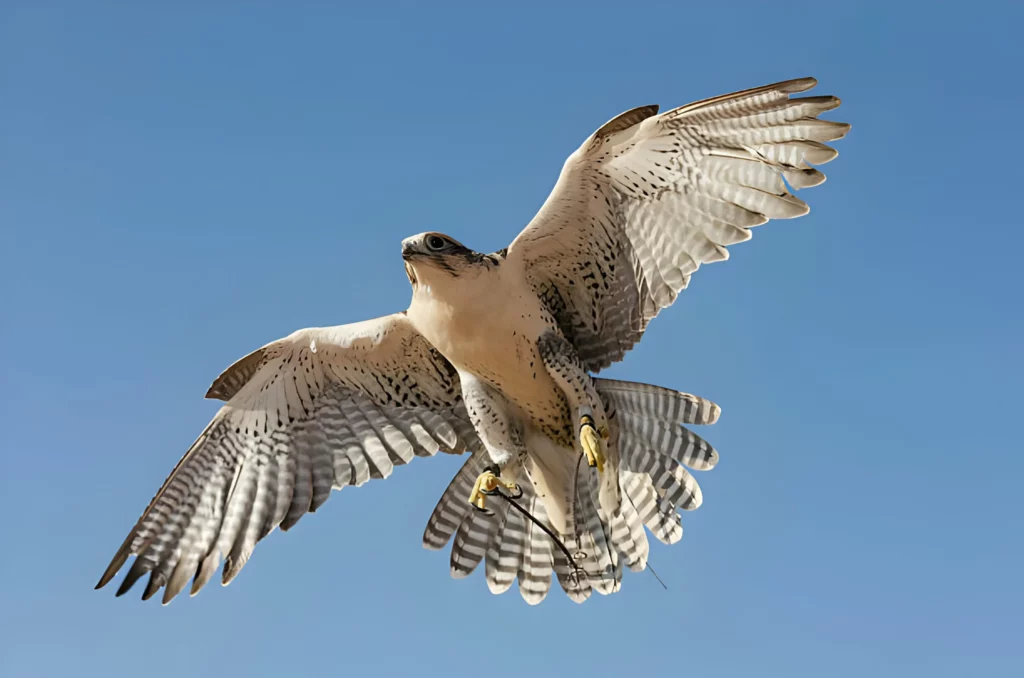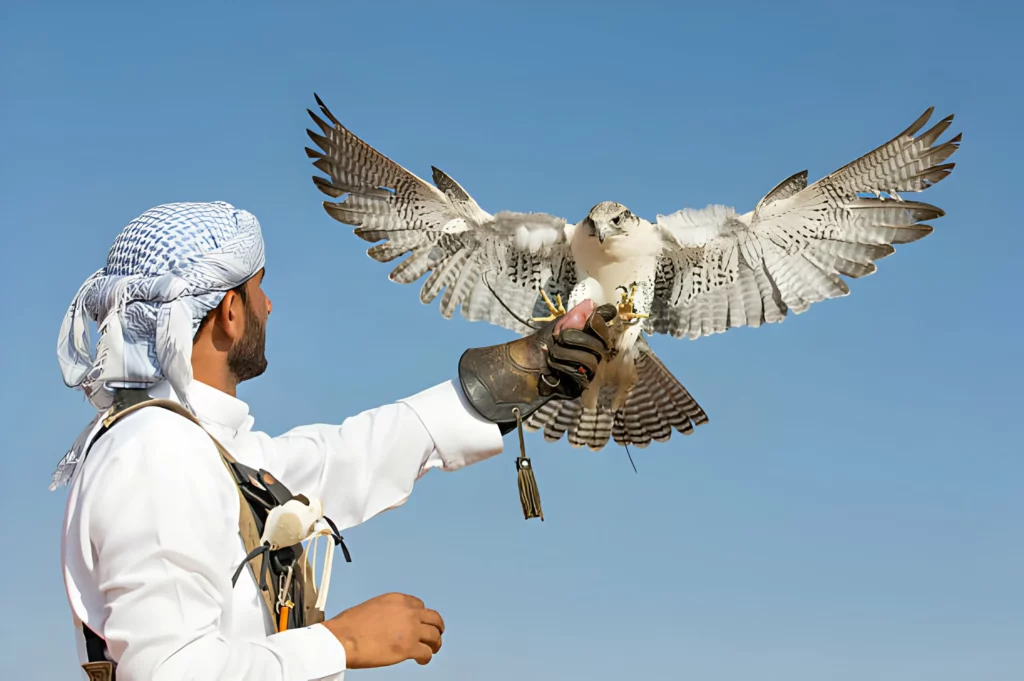Notable Differences Between a Hawk and a Falcon
For beginners in falconry, identifying different Birds of Prey, especially the differences between a Hawk and a Falcon can be a common challenge.

These majestic birds, often seen soaring independently at great heights, captivate observers.
Nevertheless, there are essential distinguishing factors to observe that aid in telling Hawks and Falcons apart.
Let’s explore further to gain a better understanding!
What are the Differences Between a Hawk and a Falcon?
There are also several key differences between the two. Here are some of the main differences:
1. Taxonomy
The genus Falco is the classification of falcons, which are under the family Falconidae.
They are the representatives of birds of prey such as the Peregrine Falcon and Merlin.
The hawks are the ones that belong to the family Accipitridae, which is different from the owls.
Hawks are arranged in various groups such as Accipiter (True Hawks), Buteo (Buzzards and True Hawks), Aquila (True Eagles), Circus (Harriers), and Parabuteo (Harris’s Hawk).
2. Killing Methods
The hawks and falcons have the same strong talons that they use to catch prey but they use different methods to complete it.
The hawk’s talons are strong and sharp to rend the prey while falcons’ beaks have a special serration or “tooth” for the final strike.
More often than not, falcons hunt birds and sometimes bats, whereas hawks are more likely to target rabbits, rats, and small mammals like voles and mice.
When a falcon grabs the prey while it is flying, it is called “on the wing.”
3. Speed of Flight
The falcons, especially the peregrine falcon, are famous for their speedy flying.
The peregrine falcon is one of the fastest birds in the world and can fly at 200 miles per hour when diving in search of their prey.
On the contrary, the hawks usually have a more stable and slower flight.
Unlike falcons, hawks often soar and glide, using air currents to travel over large areas without using too much energy.
Take the red-tailed hawk, for example, it might not be as speedy as a falcon, but when it’s diving after something to eat, it can still hit speeds of at least 120 miles per hour.
4. Size
The primary differentiating feature between falcons and hawks is their size.
However, both hawks and eagles have larger females than males.
The hawks, on the other hand, are generally bigger, which is 8 to 30 inches in length (excluding the smallest species, the sparrow-hawk, which is 18 to 30 inches).
Differently, falcons are generally smaller to medium-sized, ranging from 8 to 26 inches.
In brief, hawks tend to be bigger than falcons, but factors such as age and species can also influence this.
5. Food
Hawks are the birds that love to feed on mice, rats, fish, snakes, lizards, frogs, and insects.
The falcon, on the contrary, feeds on birds that are smaller and even insects.
The falcons, sharing the same love for grasshoppers, crickets, moths, and beetles as the kestrels, are also known to snatch on them.
Despite this, the larger falcons, such as the peregrines, are among the species that prey on water birds, shorebirds, and even pigeons.
Today, ospreys, a large hawk, are mainly preying on fishes.

6. Nesting Habit
Hawks usually prefer to nest high above the ground in the crown of large trees.
They build their nests from large sticks, twigs, bark, and feathers and they can continue to use the nest for many years.
The falcons have been used to roosting on the ledges of cliffs and now they are adapting to the tall buildings and bridges for nesting.
The American kestrel that is the smallest falcon likes to nest in the holes in trees or manmade nest boxes and the height of the nesting places ranges from 10 to 30 feet above the ground.
7. Lifespan
Hawks’ longevity is typically longer than Falcons’ age.
The average lifespan of a hawk is around 20 years, but a falcon dies at about 13 years old.
Sadly, many falcons, about 6 out of 10, don’t make it past their first year of life.
Both falcons and hawks face similar dangers in the wild.
8. Location
Falcons live all around the world in different places.
They hang out in wetlands, grasslands, mountains, estuaries, forests, scrublands, taiga, deserts, and even the freezing Arctic.
Some types of falcons do well in busy human areas like parks, farms, cities, and gardens.
Hawks are quite flexible birds and can live in various spots. Research shows they like open places.
They occur in fields, deserts, humid, tropical areas, or mountainous plains. They settle here because it’s more convenient for them to get food.
9. Color Pattern
Hawks and falcons are of different colors and it is through this that you can determine which is which.
Red-tailed hawks are white-chested and have brown spots on their heads, wings, backs, and bellies.
The adults have red tails, while the young ones have tails with brown stripes.
Peregrine falcons also have white chests, but their colors are mostly gray and white, with stripes on their bellies and legs.
Falcons have gray “sideburns” called malar stripes, which red-tailed hawks don’t have.
10. Flying Style
The hawk and the falcon fly in different ways as their wings are built for different purposes.
Hawks glide or flap, and soar, moving in circles now and then.
Falcons are the fastest and can fly at a speed of 60 miles per hour, while hawks fly only about 40 miles per hour.
The falcons have long and narrow wings that are ideal for sudden halts and dives and thus they use quick and powerful flapping.
The peregrine falcon as well as its family of falcons that can fly at speeds of up to 180-200 miles per hour are also capable of this.
Every bird, such as the hawk and the falcon, is a separate entity and unique. They show that animals can be more than pets; they can be the ones who are unique and funny.
If you are into birding or you just like seeing them flying, we hope you had a fun time discovering these fascinating animals.
